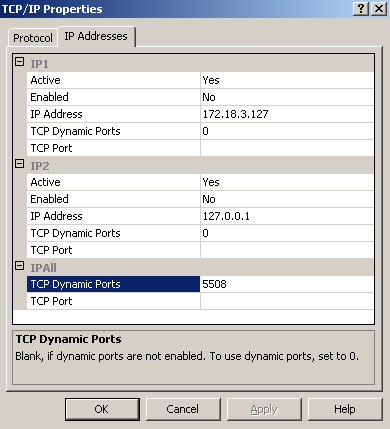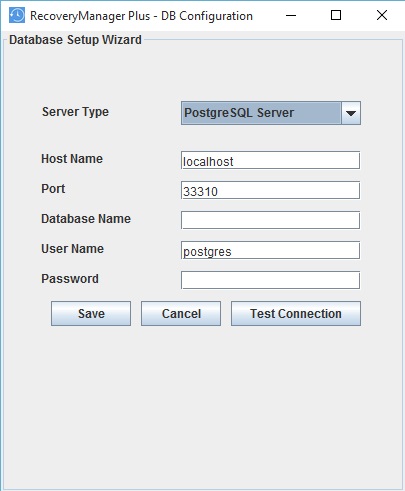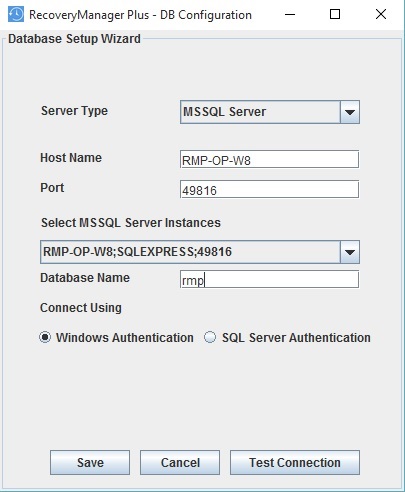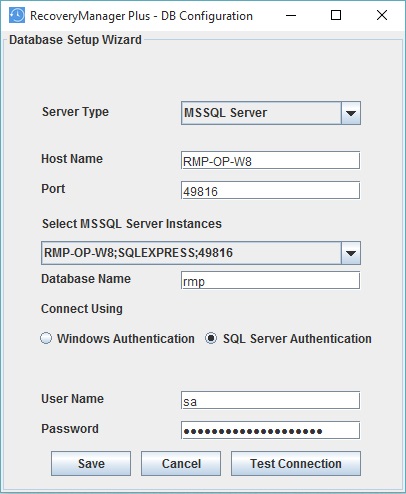In a simple three stage process, migrate the PostgreSQL data and run the RecoveryManager Plus Server with MS SQL Server.
If not, right click the Logins, New Login and provide a corresponding user name. The New user must have the sysadmin server level role and database level role of db_owner.
Follow the steps to provide the sysadmin role permission:
Right click the user, click 'Properties'
Go to 'Server Roles' → Check sysadmin and click 'OK'
Note: Details about user roles: Refer the documents in the following links:
For Server Level Roles: http://msdn.microsoft.com/en-us/library/ms188659.aspx
For Database Level Roles: http://msdn.microsoft.com/en-us/library/ms189121.aspx
For additional resources: http://www.mssqlcity.com/Articles/Adm/SQL70Roles.htm
Server Role of the user should be 'sysadmin' and Database Role of the user should be 'db_owner'.
The members of sysadmin server role can perform any activity in SQL Server and have completes control over all database functions.
The members of db_owner database role can perform any activity in the database.
Copy the following files to <RecoveryManager Plus Home>\bin folder.
Note: Please install the corresponding SQL Native Client / Command line Utilities in the RecoveryManager Plus machine as per the MS SQL Server version and CPU type of RecoveryManager Plus machine.
| MS SQL Server Version | Command line Utilities | Native Client |
|---|---|---|
|
2008 R2 |
Download |
Download |
|
2012 |
Download |
Download |
|
2014 |
Download |
Download |
|
2016 |
Download |
Not needed |
|
2017 |
Download |
Not needed |
After installing the Command Line utilities, please copy the following files:
Copy the files to → RecoveryManager Plus Home → \bin folder.
If the Firewall is enabled in MS SQL Server machine, the TCP and UDP Ports need to be opened.
UDP Port is normally 1434.
To check the TCP Port settings open SQL Configuration Manager:

Run the shutdown.bat file from <RecoveryManager Plus Home>\bin\ folder in the Command Prompt to stop the RecoveryManager Plus server.
Open Command Prompt and navigate to <RecoveryManager Plus Home>\bin. Enter changeDB.bat command to migrate the database with the data intact.
(OR)
To change the database from PostgreSQL to Microsoft SQL without migrating the data: Open Command Prompt and navigate to the location <RecoveyManager Plus Home>\bin. Enter the command changeDB.bat false to migrate the database without data.

For Windows authentication, the credentials of the Domain user are automatically taken.

For Microsoft SQL Server Authentication, enter the User Name and Password.

If the Microsoft SQL server you wish to migrate to has Force encryption enabled, select the check box against SSL connection and follow the steps mentioned below.
keytool -import -v -trustcacerts -alias myserver -file pathofthecert\certname.cer -keystore"..\lib\security\cacerts" -keypass changeit -storepass changeit -noprompt, where pathofthecert is the location where the certificate has been stored and certname is the certificate name. The certificate will be added to your Java KeyStore.
Copyright © 2023, ZOHO Corp. All Rights Reserved.